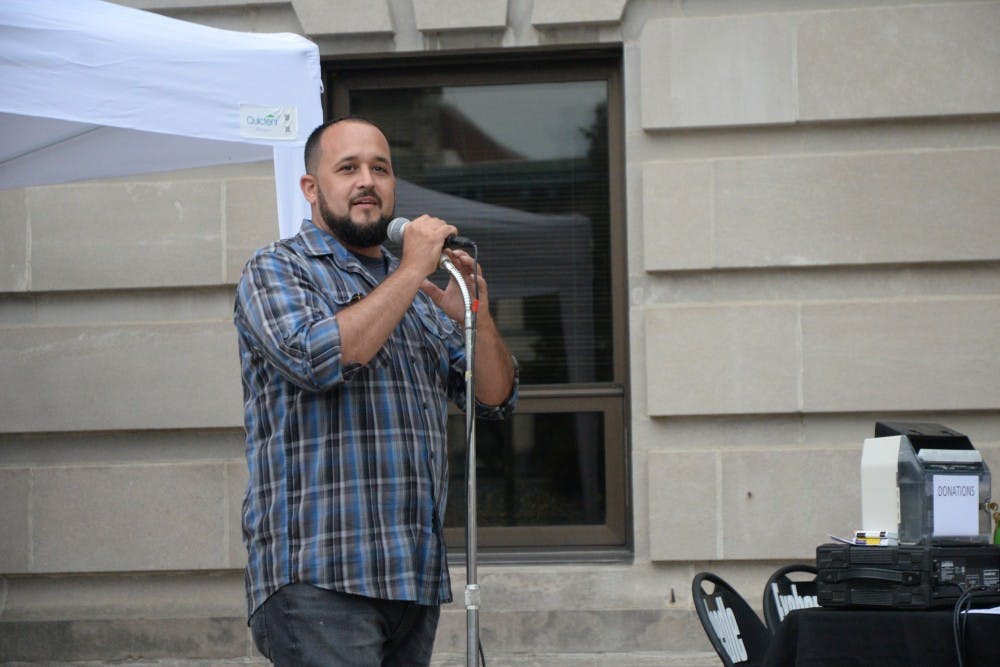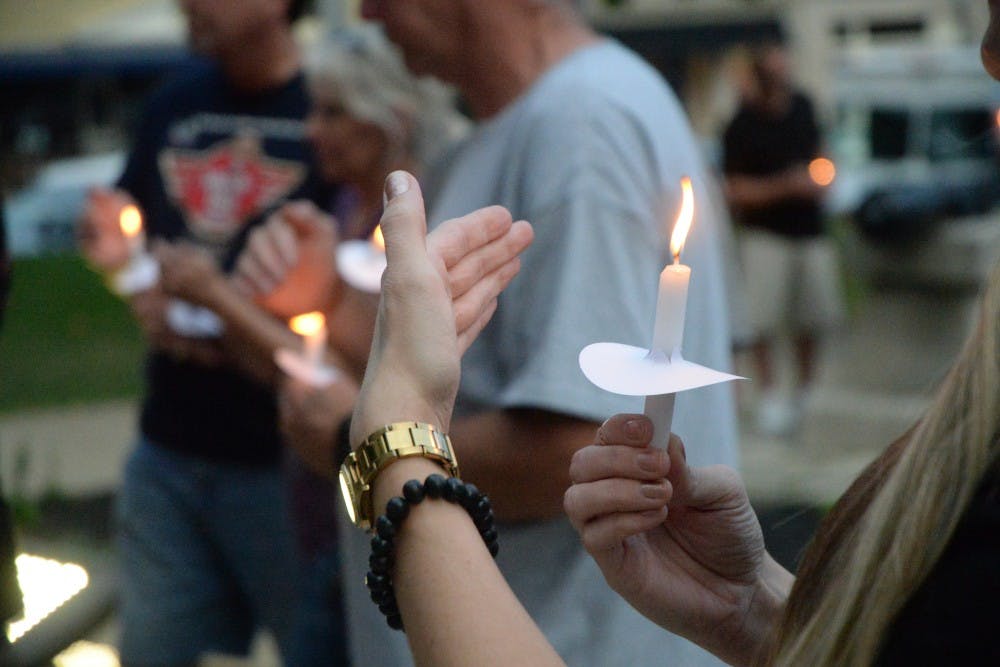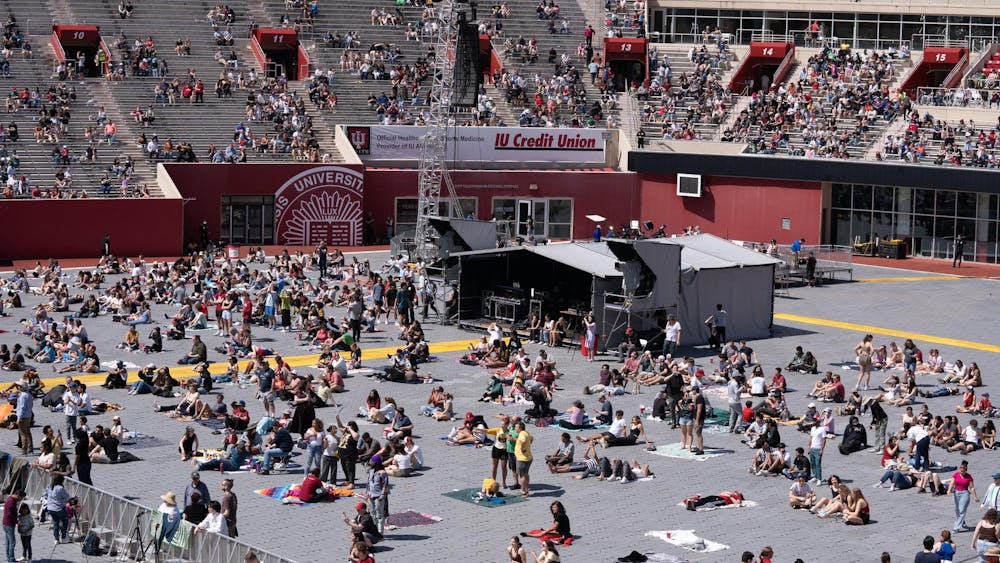At Thursday night's overdose awareness and remembrance vigil attendees told stories and lit candles for loved ones who they'd lost to opioid overdoses.
The Third Annual Overdose Awareness and Remembrance Vigil, which took place in front of the Monroe County Courthouse, was intended to be a call to action, Chris Abert said.
He helped organize the vigil and is the director of the Indiana Recovery Alliance. The organization was created with the goal of educating and advocating for people who struggle with addiction. He said the best way to assist people who face addiction is by showing them love and compassion.
“The first thing to do is make sure they don’t lose connection with the people that they love and their communities,” Abert said.
From there they can move toward treatment programs, he said.
Brandon Drake, who also spoke at the vigil, said he’s had experiences with people who wanted to get clean but were unable to afford the cost of treatment programs.

Drake co-founded Courage to Change, a sober living collective. He mentioned one instance where two pregnant women who used IV drugs desperately wanted help but were unable to get it. He even helped take them from hospital to hospital, each time being rejected.
“This is an everyday battle,” he said.
He can give a list of centers to call, but he said programs are likely to reject people whose insurance won’t cover the high prices for treatment. Programs can cost upwards of $30,000 a month, he said. He and Abert agree that this medical assistance should be free.
They also agree that law enforcement involvement doesn’t solve the systemic issue. Drake said the government cut funding in the 1990s for mental health and drug treatment facilities. Now, he said, jails are serving as the replacement to these centers.
When Drake addressed the crowd, he said the opioid epidemic had become a pandemic. He asked crowd members who were comfortable doing so to raise their hands if they had used drugs in the past or currently used drugs. More than half raised their hands.
Drake said he’s seeing the community get to a point where people aren’t afraid to admit they use drugs or love somebody who does. Abert had said before the vigil that the silence of people unwilling to address the issue equalled death.
The vigil featured a demonstration on how to use naloxone, the medication used to reverse opioid overdoses.
Abert’s organization distributes naloxone to people who need it, and to date he said hundreds have reported back to say they had reversed overdoses using the kits.
When someone overdoses, time should not be wasted trying to revive them with ice water, Abert said. First, someone should rub their knuckles on a suspected overdose victim’s sternum. If they do not respond, he said it is likely that they’ve overdosed.
Step two is to call for an ambulance, and step three is to clear the person’s airways. Abert said opioid overdoses tend to cause depressed breathing, so someone who wants to prevent an overdose from becoming fatal should perform rescue breaths, ensuring air is filling up the person’s lungs and not their stomach.
If they don’t start breathing on their own, Abert said, this is when they should be injected with the overdose reversal medication.
He said when people who’ve overdosed regain consciousness one can hear them gasp for air.
After the demonstration, a couple of people told the crowd about their experiences with loved ones who they’d lost to overdoses.
One woman said her husband fatally overdosed three-and-a-half years ago. Another said she’d lost a good friend only three months ago. Following the series of speakers the crowd lit candles.
Abert encouraged attendees to speak the names of those they had lost or that they feared were at risk of being lost to overdoses into the microphone. The moment of silence intended to end the vigil was preceded by two loud military planes that had performed a flyover for the Ohio State football game, which had just began.
For a few moments the planes won the focus of the crowd, but eyes soon returned to the stage and the crowd grew silent again.






